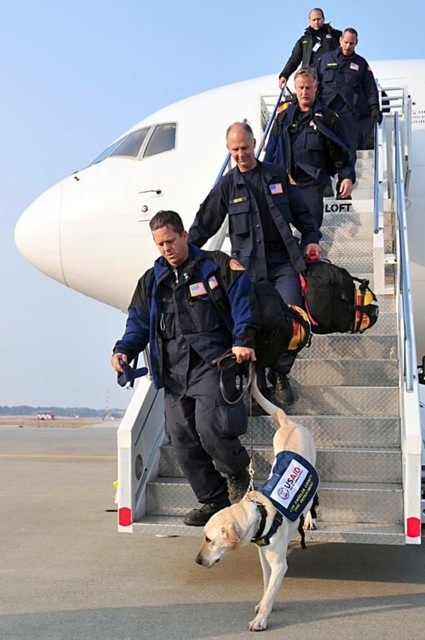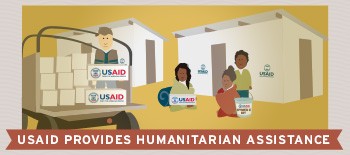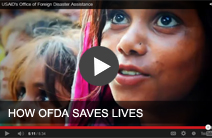- What We Do
- Agriculture and Food Security
- Democracy, Human Rights and Governance
- Economic Growth and Trade
- Education
- Ending Extreme Poverty
- Environment and Global Climate Change
- Gender Equality and Women's Empowerment
- Global Health
- Water and Sanitation
- Working in Crises and Conflict
- Disaster Assistance
- Political Transition Initiatives
- Conflict Mitigation and Prevention
- Countering Violent Extremism
- Disaster Risk Reduction
- Peacebuilding and Reconciliation
- Providing Safe & Secure Environments for Development
- Recovering From Crisis
- Resilience
- Tech Challenge for Atrocity Prevention
- World Humanitarian Day
- U.S. Global Development Lab

Search and rescue teams deployed by USAID arrive in Japan to assist victims of the 2011 earthquake and tsunami.
Staff Sgt. Marie Brown, U.S. Air Force
On average, we respond to 65 disasters in 50 countries every year, helping tens of millions of people.
USAID staff in Washington, D.C. and around the world work to ensure that aid reaches people affected by disasters, wherever they are and whenever they need it.
- We monitor emerging crises, pre-position relief supplies, and develop programs to help local communities prepare for disasters.
- We can also pre-position response teams and take early action when we know a disaster is coming—such as a hurricane or volcanic eruption—to make sure assistance is available to affected communities.
- In the aftermath of a crisis, USAID activates its professional team of regional and technical humanitarian experts, including engineers, doctors, epidemiologists, and logisticians. They can be deployed to an affected area within hours to help identify the most pressing humanitarian needs.
- We have emergency relief supplies—including shelter materials, blankets, and hygiene kits—located in regional hubs around the world. When communities need supplies that USAID doesn’t stockpile, we fast-track procurement so that the commodities can be delivered as soon as possible.
Through well-established processes and partnerships with relief agencies, USAID responsibly provides rapid funding for critical humanitarian activities. Delivering assistance quickly is crucial, but ensuring that we provide assistance in an appropriate way is essential. In addition to reducing suffering and mitigating the destruction caused by disasters, we help communities recover and become more resilient in the process.

How does USAID provide international humanitarian assistance?
Related Links
Related Sectors of Work








Comment
Make a general inquiry or suggest an improvement.